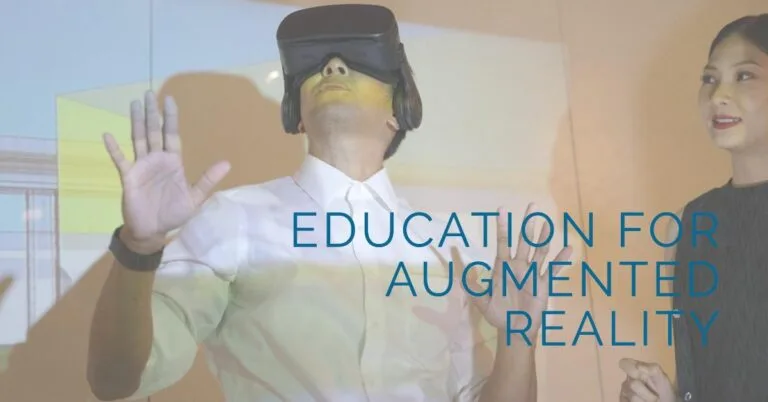
What Does the Mesh Do in Augmented Reality?
Remember that time you saw a dinosaur stomping through your living room on your phone? Or maybe you virtually tried on those new sunglasses before hitting “purchase”? That’s the magic of Augmented Reality (AR) at work. But have you ever stopped to wonder, what makes those virtual objects stay put and interact with the real world so convincingly? The answer, my friend, lies in a hidden layer called the mesh.
Think of it this way: Imagine you’re trying to hang a picture frame on a real wall. You wouldn’t just stick it to thin air, right? You’d first need to find the studs behind the drywall to ensure a proper anchor. The mesh in AR functions similarly. It’s a virtual map, a 3D representation of the real world, that provides the foundation for all those dazzling virtual elements you see.
But what does the mesh do in Augmented Reality exactly? Buckle up, because we’re about to delve into the fascinating world of AR and explore the power of the mesh!
What exactly is the mesh in AR?
In simpler terms, the mesh is a digital map, a 3D blueprint of the real world that your AR device creates. It’s like a virtual scaffolding that AR uses to understand the environment and precisely position those cool virtual objects you see.
Imagine you’re playing an AR game where you have to defend your castle from virtual attackers. The mesh would be the intricate map of your room, outlining the furniture, walls, and even the floor. With this map, the game can perfectly place the castle on your coffee table, making it appear like a real fortress under siege!
What Does the Mesh Do in Augmented Reality?
What is the mesh? In simpler terms, it’s a digital blueprint of your surroundings. This blueprint is built using various techniques like depth cameras, LiDAR sensors, and even your phone’s camera to capture information about surfaces, edges, and spatial relationships in the real world. Imagine a complex web of interconnected points that map out the environment.
So, what does the mesh do in Augmented Reality? Here’s where the magic happens:
Anchoring Virtual Objects:
The mesh acts as a virtual anchor point for AR objects. When you see a 3D dragon perched on your coffee table in an AR app, the mesh silently ensures that the dragon stays put, adjusting its position and orientation as you move your phone around. It’s like meticulously placing miniature nails on that virtual picture frame, ensuring it stays seamlessly integrated with the real wall (or coffee table, in this case).
Lighting and Shadow Effects:
The mesh plays a crucial role in creating realistic lighting and shadow effects on virtual objects. By understanding the real-world environment, the AR app can simulate how light interacts with the virtual object, making it appear more natural and believable within the scene.
Interaction and Occlusion:
The mesh allows for realistic interaction between virtual and real-world objects. For example, if you try to place a virtual chair behind a real one in an AR app designed for furniture placement, the mesh would understand the spatial relationship and ensure the virtual chair appears occluded (hidden) by the real one, just like it would in the real world.
Improved User Experience:
By providing a stable and accurate foundation for virtual objects, the mesh significantly enhances the overall AR experience. It fosters a sense of immersion and realism, making users feel like the virtual elements are truly part of their environment. Imagine the disappointment if your virtual T-Rex kept glitching through the floorboards – the mesh prevents such immersion-breaking issues.
Deep Dive: How Does the Mesh Work in AR?
So, how does this digital map come to life? Here’s a breakdown of the mesh creation process:
- Environmental Scanning: Your AR device, like a phone or headset, uses its camera and sensors to scan the environment. It captures depth information, recognizing flat surfaces, edges, and even textures.
- Point Cloud Generation: From the captured data, the device creates a point cloud. Think of it as a constellation of dots, each representing a specific point in the real world.
- Mesh Construction: Using clever algorithms, the device connects these dots, forming a 3D mesh. This mesh is like a digital skin that drapes over the real world, capturing its basic geometry.
The Importance of the Mesh in AR
Now that you understand how the mesh works, let’s explore why it’s so crucial for AR:
- Accurate Object Placement: Without the mesh, virtual objects would float around erratically, defying the laws of physics. The mesh ensures virtual objects seamlessly interact with the real world, like that dinosaur stomping on your rug (don’t worry, it’s virtual!).
- Realistic Interactions: The mesh allows for realistic interactions between virtual and real objects. Imagine virtually placing a lamp on your table and seeing how the light interacts with your surroundings. The mesh makes this possible!
- Enhanced User Experience: A good mesh translates to a smooth and immersive AR experience. Users can confidently interact with virtual objects, fostering a sense of presence and realism.
Real-World Examples: How the Mesh Makes AR Shine
The applications of the mesh extend far beyond entertainment. Here are some real-world examples showcasing its power:
- Revolutionizing Retail: AR apps powered by the mesh allow users to virtually try on clothes, furniture, or even makeup before purchasing. This not only enhances the shopping experience but also reduces returns due to size or fit issues.
- Boosting Education and Training: Imagine surgeons practicing complex procedures on a virtual patient or students exploring the solar system in 3D – all thanks to the mesh. AR, powered by the mesh, can create immersive learning experiences that go beyond textbooks.
- Enhancing Industrial Design and Maintenance: Engineers can use AR apps with mesh capabilities to visualize 3D models of machinery superimposed on real-world environments, facilitating design reviews, maintenance procedures, and remote troubleshooting.
These are just a few glimpses into the vast potential of the mesh in AR. As AR technology continues to evolve, the mesh will undoubtedly play an even more significant role in bridging the gap between the physical and digital worlds.
Challenges and the Future of the Mesh
While the mesh is a powerful tool, it still faces some challenges. Creating a high-quality mesh in complex environments or with low lighting can be tricky. Additionally, processing power and battery life limitations on devices can impact the mesh’s accuracy and detail.
However, the future of the mesh looks bright! Researchers are constantly developing new algorithms and techniques for faster, more robust mesh creation. Advancements in AI and hardware will likely lead to even more precise and detailed meshes, unlocking even more immersive AR experiences.
Conclusion: Beyond the Hype, the Mesh Paves the Way
AR has the potential to revolutionize various industries, and the mesh acts as the invisible scaffolding that makes it all possible. It’s the unsung hero, the silent partner that ensures a seamless and realistic AR experience.
So, the next time you encounter a virtual object dancing around in your living room, remember the magic of the mesh – the unseen force that makes it all tick.
Ready to explore the world of AR? Keep an eye out for apps and experiences that utilize the power of the mesh. You might just find yourself virtually walking on the moon or having a tea party






